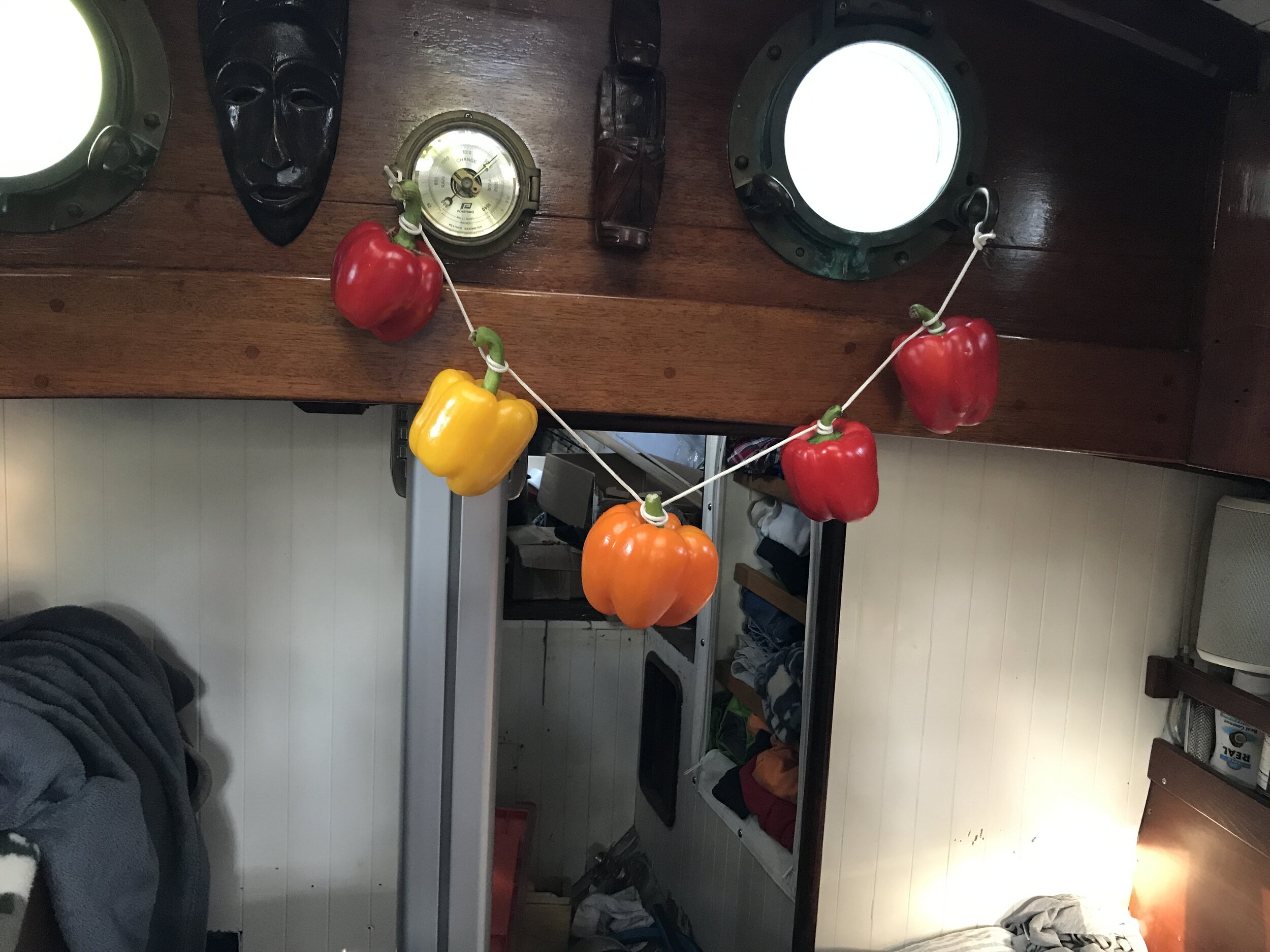Pepper Ornaments?
(Alternate title: How Provisioning Works on Calypso)
On Tuesday last week, I went grocery shopping. First time inside a store since December. It was overwhelming, crowded, not as much fun as I thought it would be (I’m one of the weirdos who LOVES grocery shopping), and expensive. On the plus side, we’re stocked with most of the essentials for a long time.
A lot of people wonder how cooking on a boat is different than cooking on land. Other than the fact that I work to limit the amount of cleanup required with menus, which sometimes dictates the pan choice, our cooking is pretty much the same on the boat. Oh - one other one. Cooking in smaller quantities to limit leftovers. No excess fridge space, no freezer.
What I’m realizing as we’re living aboard this time around is that the real difference in the “Three S’s” of provisioning (Shop, Schlep, and Stow) is in the STOW part. I’ll explain.
Shop: a list is pretty important; sticking to it even more so. My limited fridge space in particular means grabbing something that looks really appealing isn’t necessarily wise. Where will it go? Can it be unrefrigerated?
Schlep: sure, you have to bring in groceries from the car when you’re land-bound. On the boat, if you’re on the hard you need to transport said groceries up the ladder. If you’re at anchor, there will be a dinghy trip involved, as well as the logistical challenge of actually GETTING to the store and back in the first place.
Stow: on land, you bring the groceries in and put them away. Not a big deal. On the boat, here’s my process. It helps if Jeremy can be my schlepper while I’m working down below - and it is ESSENTIAL that he’s not also undertaking some major project inside the boat on provisioning days!
Bring down the refrigerated items. Repackage anything that’s a candidate for such work: any meat that’s in styrofoam trays, for example, gets repacked into ziploc bags.
Empty out the refrigerator and clean it, wiping out any accumulated moisture at the bottom and pitching forgotten about items that have gone bad. (How do you lose anything in a fridge the size and shape of a reasonable cooler? I don’t know, but I can assure you it happens.)
Fill the fridge strategically, with layers of stuff taking advantage of zones: coldest items at the bottom, veggies in the middle away from the plates. We keep often-used items in certain places. For example, we’re used to having the half and half for morning coffee in the front left corner at the top of the fridge, which means we don’t have to think about where it is or hunt for it.
(I often have veggies and fruits in particular that don’t fit in the fridge, at least on the first few days after a provisioning run. Prioritizing what MUST be refrigerated (fresh herbs, berries) helps keep waste to a minimum - and menu planning does the rest. Sometimes we’ve had to eat melon for 4 meals in a row. )
Bring the rest of the groceries down to the salon and lay them out on the floor. Repackage anything that needs repacking, including stashing items like flour or sugar or pasta or rice, in their bags/containers, into ziploc bags (don’t worry, I reuse said bags over and over and over again!). I try to organize groceries on the floor in general categories, since that’s how I stow them in the lockers.
Open lockers and stow away! Sometimes I have to remove some stuff from lockers to be able to pack items in, but mostly it’s simpler than that. Suggestion is to mix up how you put things in, so you’re not burying all the tomatoes under all the corn.
Gather all trash, put away any cushions you needed to move to access storage lockers. Pour a glass of water and pat yourself on the back for a job well done! Now. What’s for dinner?
Peppers don’t fit in the fridge. No problem.

